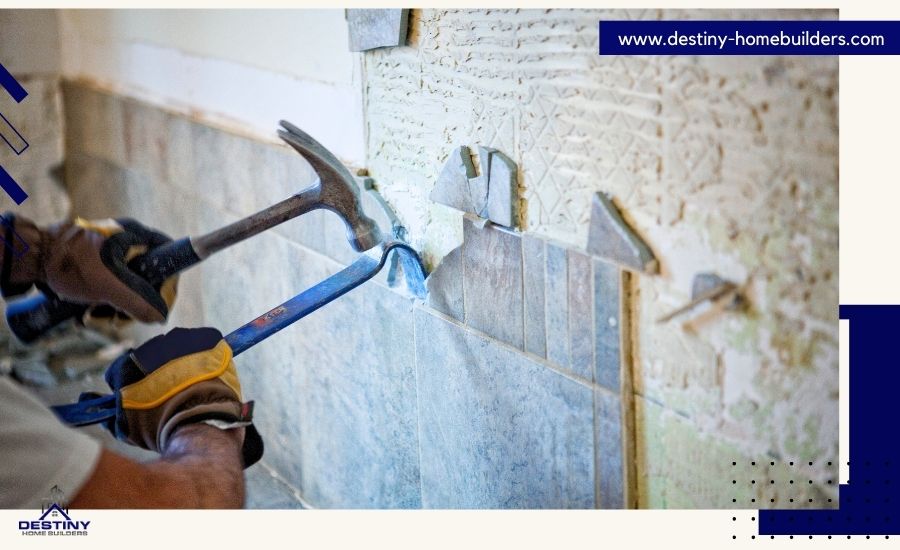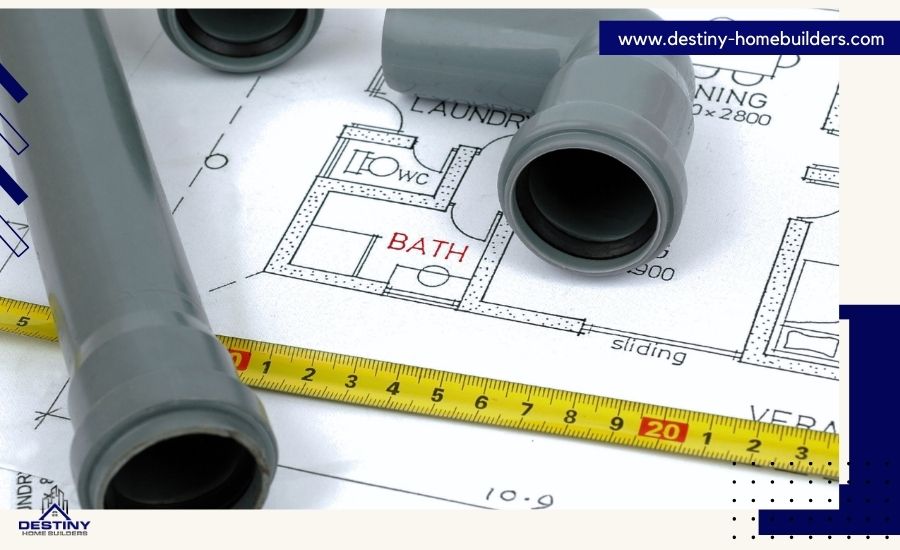
Remodeling your bathroom can be a rewarding project that enhances both the functionality and appearance of your home. Whether you're a beginner or have some DIY experience, a DIY bathroom remodel allows you to customize the space to fit your needs and style. This guide will provide you with practical tips and tricks to transform your bathroom on a budget, ensuring a successful and affordable renovation.
- Getting Started with Your DIY Bathroom Remodel
- Tools You Need for a Successful DIY Bathroom Renovation
- Planning Your Remodel Step-by-Step
- Budget-Friendly Ideas for a DIY Bathroom Remodel
- How to Save Money on a Bathroom Remodel
- Affordable Materials for DIY Renovations
- Step-by-Step Guide to Remodeling Your Bathroom
- Bathroom Remodel Checklist for Beginners
- Installing Floors and Fixtures in Your Remodel
- Maximizing Space in a Small DIY Bathroom Remodel
- DIY Layout Tips for Small Bathrooms
- Creating Storage During Your Remodel
- Wrap Up Your DIY Bathroom Remodel with Confidence
- Frequently Asked Questions
- How long does a DIY bathroom remodel take?
- What is the average cost of a DIY bathroom remodel?
- Can I remodel a bathroom without experience?
- Do I need a permit for a DIY bathroom remodel?
- What are the most common mistakes in DIY bathroom remodels?
- Ready to Start Your DIY Bathroom Remodel
Getting Started with Your DIY Bathroom Remodel
Before diving into your DIY bathroom remodel, planning carefully and gathering the right tools is essential. Proper preparation can save you time, and money, and prevent common mistakes during the renovation process.
Tools You Need for a Successful DIY Bathroom Renovation
Having the right tools is crucial for a smooth DIY bathroom remodel. Here's a list of essential tools you'll need:
- Measuring Tape: This is for accurate measurements of your space and materials.
- Utility Knife: Useful for cutting materials like drywall and flooring.
- Screwdrivers and Wrenches: For assembling fixtures and appliances.
- Tile Cutter or Wet Saw: Essential if you're installing new tile flooring or walls.
- Caulking Gun: This is for applying sealants around fixtures to prevent leaks.
- Safety Gear: Gloves, goggles, and masks to protect yourself during the remodel.
By having these tools on hand, you'll be well-equipped to handle various tasks involved in your DIY bathroom remodel.
Planning Your Remodel Step-by-Step
A well-thought-out plan is the foundation of any successful DIY bathroom remodel. Follow these steps to ensure a smooth renovation:
- Assess Your Current Bathroom: Identify what works and what needs improvement. Look for issues like water damage, outdated fixtures, or lack of storage.
- Set Your Goals: Decide whether you want a cosmetic update or a full-scale remodel. Define the changes you want to make, such as new tiles, fixtures, or lighting.
- Create a Budget: Determine how much you will spend on the remodel. Allocate funds for materials, tools, and any unexpected expenses.
- Design Your Layout: Plan the new layout of your bathroom, considering the placement of fixtures like the bathtub, sink, and toilet.
- Gather Materials and Tools: List all the necessary materials and tools. Shop around for the best prices to stay within your budget.
- Schedule Your Timeline: Set a realistic timeline for each phase of the remodel, allowing extra time for any delays or complications.
By following these planning steps, you'll set a clear path for your DIY bathroom remodel, making the process more manageable and efficient.
Budget-Friendly Ideas for a DIY Bathroom Remodel
Renovating your bathroom doesn't have to break the bank. With some smart choices and creativity, you can achieve a stunning DIY bathroom remodel on a budget. Here are some tips to help you save money while enhancing your bathroom's look and functionality.
How to Save Money on a Bathroom Remodel
Saving money on your DIY bathroom remodel is possible with these strategies:
- Reuse and Repurpose Materials: Instead of buying new fixtures, consider refinishing or repurposing existing ones. For example, a fresh coat of paint on cabinets can give them a new life.
- Shop Smart: Look for sales, discounts, and clearance items at home improvement stores. Online marketplaces can also offer affordable options for fixtures and materials.
- DIY Where Possible: Handle tasks like painting, tiling, and installing fixtures yourself to save on labor costs. However, know your limits and seek professional help for complex tasks like plumbing and electrical work.
- Opt for Cost-Effective Materials: Choose affordable alternatives to high-end materials. For instance, ceramic tiles can mimic the look of more expensive stone tiles without the hefty price tag.
- Keep the Existing Layout: Changing the layout of your bathroom can increase costs. By keeping the current layout, you can save on plumbing and electrical expenses.
Implementing these money-saving tips will help you stay within your budget while achieving a beautiful DIY bathroom remodel.
Affordable Materials for DIY Renovations
Selecting the right materials is key to a DIY bathroom remodel on a budget. Here are some affordable options that don't compromise on quality or style:
- Vinyl Flooring: Durable and water-resistant, vinyl flooring is a cost-effective choice that comes in various styles, including those that mimic wood or tile.
- Peel-and-Stick Tiles: Ideal for DIYers, these tiles are easy to install and come in numerous designs, allowing you to update your floors or walls without the high cost of traditional tiles.
- Laminate Countertops: A budget-friendly alternative to granite or marble, laminate countertops are easy to maintain and available in many colors and patterns.
- Prefabricated Cabinets: Ready-made cabinets are more affordable than custom-built ones and can be painted or stained to match your bathroom's decor.
- Economical Fixtures: Look for budget-friendly faucets, showerheads, and lighting fixtures that offer good quality without the premium price tag.
By choosing these affordable materials, you can achieve a stylish and functional DIY bathroom remodel without overspending.
Step-by-Step Guide to Remodeling Your Bathroom
A well-organized step-by-step approach can simplify your DIY bathroom remodel. Whether you're a beginner or an experienced DIYer, having a checklist ensures nothing gets overlooked during your renovation.
Bathroom Remodel Checklist for Beginners
For beginners, a DIY bathroom remodel can seem overwhelming, but with a clear checklist, the process becomes more manageable. Here are the essential steps:
- Prepare Your Space: Start by turning off the water supply and removing existing fixtures like sinks, toilets, and vanities.
- Demolition: Safely remove old tiles, cabinets, and flooring. Ensure you're careful around plumbing and electrical lines.
- Repair and Patch: Check for any water damage, replace subflooring if necessary, and patch drywall or plaster.
- Install Plumbing and Electrical Work: If you're updating fixtures or lighting, this is the time to install new plumbing and electrical lines. It’s best to consult a professional for these tasks.
- Waterproofing: Apply waterproof membranes in areas prone to moisture, such as around the shower or bathtub.
- Install New Fixtures: Begin installing your new sink, toilet, shower, and bathtub.
- Tile Work: Install new flooring and wall tiles. Ensure tiles are level and properly spaced.
- Paint: Once the tiles and fixtures are in place, paint the walls with moisture-resistant paint.
- Add Finishing Touches: Install your lighting, mirrors, and towel racks. This is also a good time to re-install your baseboards or trim.
This checklist ensures you're well-prepared for each stage of your DIY bathroom remodel, keeping you on track from start to finish.
Installing Floors and Fixtures in Your Remodel
One of the most significant parts of a DIY bathroom remodel is installing new floors and fixtures. This can completely transform the look and feel of your space. Here’s how to handle it step by step:
- Flooring: For beginners, vinyl or peel-and-stick tiles are the most DIY-friendly options. Measure your space carefully and use a chalk line to keep tiles aligned. Be sure to install a proper underlayment to avoid moisture damage.
- Toilets and Sinks: Replacing toilets or sinks is easier if you maintain the existing plumbing layout. Secure the new fixtures using appropriate hardware and ensure they are level. Use caulking around the edges to prevent water leakage.
- Showers and Bathtubs: When installing a new bathtub or shower, make sure to waterproof the surrounding walls. This can prevent mold and water damage in the future.
By following these steps and using proper materials, you’ll ensure that your new flooring and fixtures look great and last long in your DIY bathroom remodel.
Maximizing Space in a Small DIY Bathroom Remodel
For those working with limited bathroom space, a DIY bathroom remodel can offer creative ways to maximize every inch. Small bathrooms can still feel open and functional with the right layout and design tricks.
DIY Layout Tips for Small Bathrooms
When dealing with small bathrooms, planning the layout carefully is crucial. Here are some tips to optimize the space:
- Keep Fixtures Compact: Choose smaller sinks, toilets, and vanities that don’t dominate the room. Floating vanities or pedestal sinks can free up valuable floor space.
- Utilize Vertical Space: Install shelving, towel racks, and storage above eye level to make the room feel taller and more open.
- Clear the Floor: Wall-mounted toilets and sinks can create the illusion of more space by clearing up the floor area. This can also make cleaning easier.
- Choose Light Colors: Lighter colors make small bathrooms feel larger. Consider white, light gray, or soft pastels for your walls and tiles.
- Mirrors: A large mirror or mirrored surface can reflect light and visually expand the room.
These layout tips can help make the most of your small DIY bathroom remodel, giving the illusion of more space without expensive renovations.
Creating Storage During Your Remodel
Maximizing storage in a small bathroom is essential to maintain a clutter-free and organized space. Here are some ideas for creating extra storage:
- Recessed Shelving: Inset shelves in the shower or walls to store toiletries without using additional floor space.
- Over-the-Toilet Storage: Install shelving or a cabinet above the toilet for storing towels, toilet paper, and other essentials.
- Floating Shelves: Add floating shelves for extra storage that doesn't take up any floor space.
- Built-In Cabinets: Consider building a small cabinet under the sink or within the wall space to store items like toiletries and cleaning supplies.
- Back-of-Door Hooks: Use the back of the bathroom door to hang towels or robes, saving space on walls or inside cabinets.
With these clever storage solutions, even small bathrooms can feel organized and spacious during your DIY bathroom remodel.
Wrap Up Your DIY Bathroom Remodel with Confidence
Completing a DIY bathroom remodel is a rewarding achievement that transforms one of the most important spaces in your home. Whether you're working with a small budget or a larger renovation plan, careful planning and attention to detail ensure you get the best results. From selecting affordable materials to maximizing storage, each step brings you closer to your dream bathroom.
By following this guide and keeping these tips in mind, you can tackle your remodel with confidence. Remember that every bathroom project comes with challenges, but with the right tools and planning, you can avoid common mistakes and enjoy a beautifully updated space. For more inspiration and expert advice on home improvement, check out our comprehensive resources to guide you through your renovation journey.
Frequently Asked Questions
How long does a DIY bathroom remodel take?
A DIY bathroom remodel can take anywhere from a few days to several weeks, depending on the scale of the project. A simple cosmetic update may take just a weekend, while a full renovation involving plumbing, tiling, and new fixtures could take 2 to 4 weeks, especially if you’re working part-time on the project.
What is the average cost of a DIY bathroom remodel?
The average cost of a DIY bathroom remodel ranges from $1,500 to $5,000. The total cost depends on the materials you choose, whether you reuse existing fixtures, and the size of the bathroom. Doing the labor yourself helps cut down on expenses significantly.
Can I remodel a bathroom without experience?
Yes, you can remodel a bathroom with little to no experience if you start with simple tasks like painting, tiling, or replacing fixtures. More complex jobs like plumbing or electrical work may require a professional, but many aspects of a DIY bathroom remodel can be learned through online tutorials and guides.
Do I need a permit for a DIY bathroom remodel?
In most cases, you will need a permit for certain aspects of a DIY bathroom remodel, especially if you’re moving plumbing or electrical lines. However, cosmetic updates like painting or installing new fixtures generally do not require permits. Check your local building regulations before starting any work.
What are the most common mistakes in DIY bathroom remodels?
Common mistakes in a DIY bathroom remodel include inaccurate measurements, improper waterproofing, and choosing the wrong materials. These errors can lead to problems like leaks, water damage, or wasted time and money. Careful planning, research, and using the right tools can help avoid these issues.
Ready to Start Your DIY Bathroom Remodel
Take the first step today by planning your DIY bathroom remodel with our helpful tips. Transform your space on a budget and make it the bathroom you've always wanted. Have more questions or need personalized guidance? Reach out to us, and we'll be happy to assist with your DIY project.








Comments: